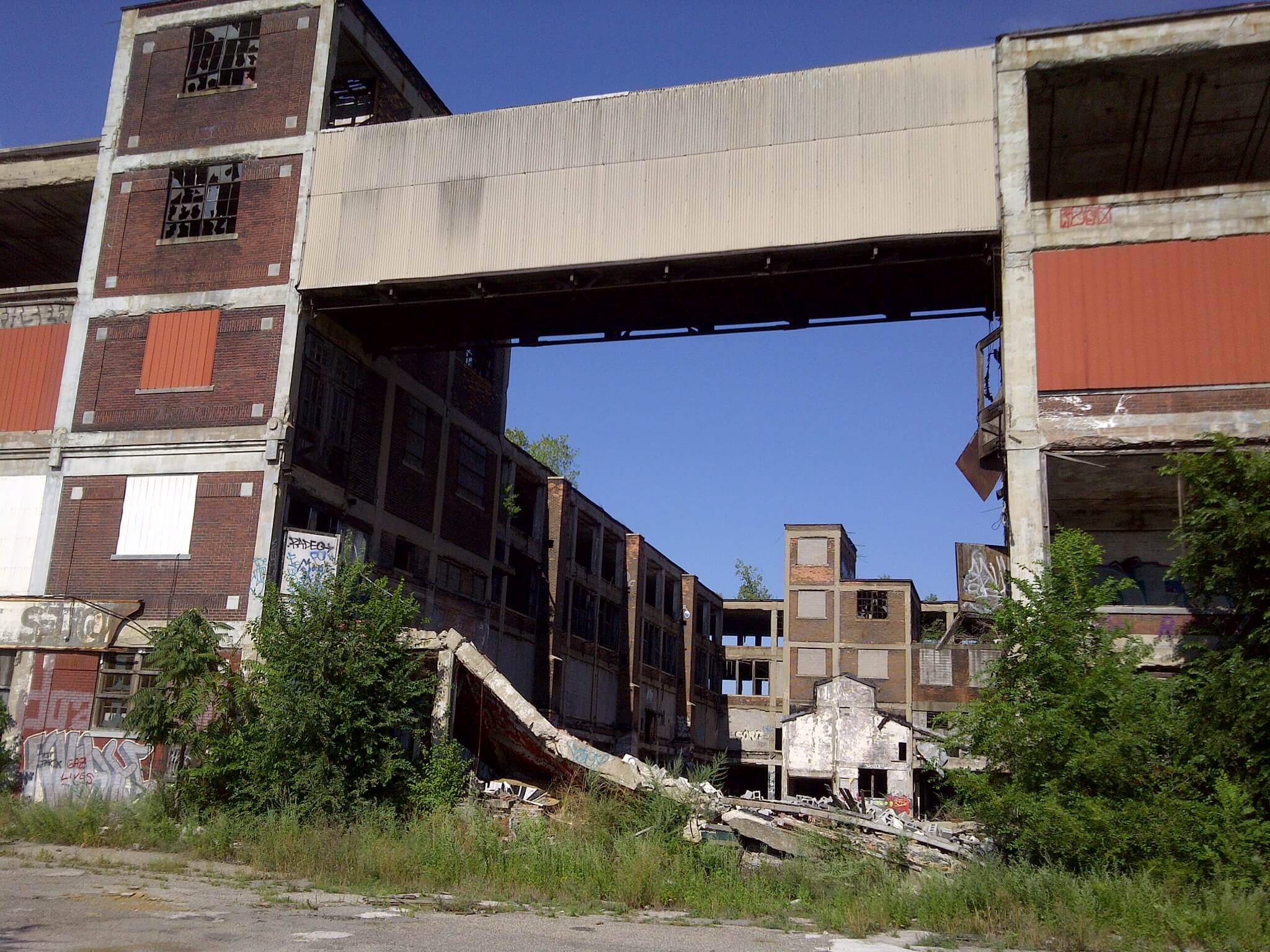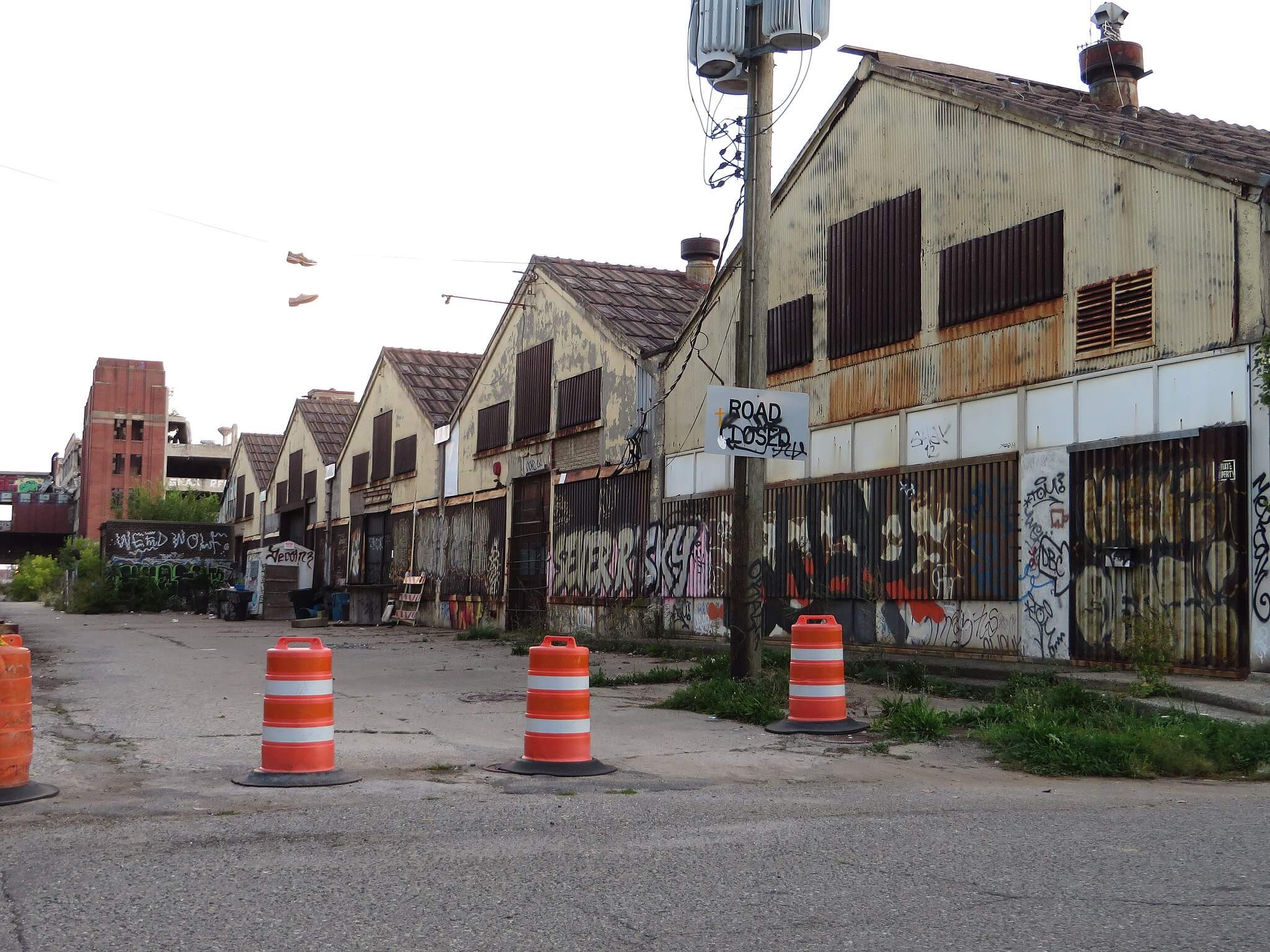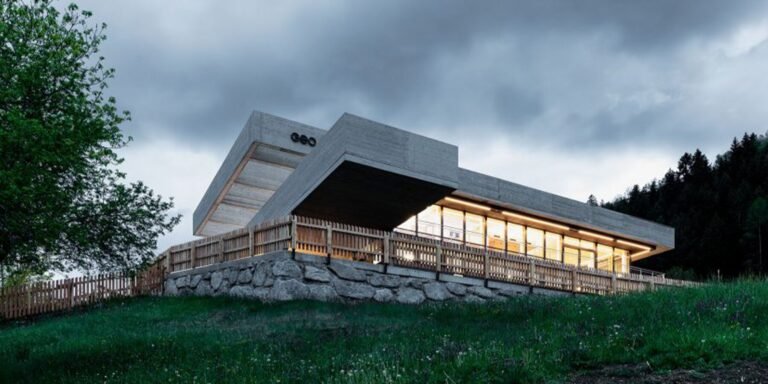Demolition work begins on Albert Kahn’s Packard Plant, a hulking relic of Detroit’s automative glory days
Following an April court order and a subsequent search for contractors, partial demolition commenced last week on the long-abandoned Packard Automotive Plant on Detroit’s east side.
Among the Motor City’s most emblematic structures, the concrete behemoth on East Grand Boulevard first opened in 1903 as the manufacturing facility for long-gone luxury automaker the Packard Motor Car Company and promptly cemented Detroit’s reputation at a nascent hotbed of technical wizardry and cutting-edge ingenuity. Eventually growing to encompass a staggering 3.5 million square feet, the Albert Kahn–designed factory was a game changer for both the building and automotive industries as it introduced the use of reinforced concrete (later a hallmark of the ultra-prolific Kahn) in the construction of American auto plants for the very first time. Employing upwards of 40,000 workers at its peak, the Packard Auto Plant was modernity embodied, smack dab in the heart of Detroit.
The colossal complex shuttered in 1958 although other businesses operated for the next several decades within some of the old factory buildings. In the 1990s, it was the (underground) epicenter of Detroit rave culture and has been a frequent filming location up until relatively recently. But mostly, the site has fallen into a state of advanced dereliction. Ravaged by scrappers and revered by artists and urban explorers, the Packard Plant of today is a (rather tired) ruin porn destination par excellence and immense-in-size symbol of Detroit’s decline. But mostly, it’s just a tumbledown—and dangerous—eyesore.

In December 2013, Peru-based Spanish developer Fernando Palazuelo purchased the 40-acre Packard site through his holding company, Arte Express Detroit, at a Wayne County tax auction for $405,000. Soon thereafter, Palazuelo unveiled buzzy and ambitious plans to transform the complex into a mixed-use art and innovation hub complete with residential, retail, and recreational offerings. Despite a ground-breaking ceremony being held for a first phase of the redevelopment project in 2017, no work aside from some initial cleanup has commenced in the near decade since Palazuelo first acquired the site. In 2020, it was announced that Palazeulo had abandoned his four-phase, $350 million redevelopment scheme and was placing the blighted property back on the market.
In the meantime, the old Packard Plant, reputed to be the largest abandoned industrial site in the world, has fallen into an even deeper state of disrepair. In 2019, a pedestrian bridge spanning East Grand Boulevard collapsed following an ice storm, renewing calls for swift action to be taken regarding the dilapidated state of the complex. The site has been deemed by the city a public nuisance and a (rather dispiriting) safety risk to those living and working near it. Efforts to force Palazuelo to demolish portions of the property have proved unsuccessful, leading to an extended legal tussle between the developer and the city that first kicked off last year when Detroit sued Palazeulo and Arte Express Detroit; it was this litigation that ultimately prompted April’s court-ordered demolition. (Palazeulo was reportedly a no-show for a trial date this March and failed to obtain a demolition permit within the mandated 21-day period.)

“The abandoned Packard Plant has been the source of national embarrassment for the city of Detroit for many years. It’s been a source of personal pain for people in this community,” the Detroit Free Press reported Detroit Mayor Mike Duggan as saying during a press conference held before demolition work commenced at 6199 Concord Avenue last week. “We had an owner that gave us nothing but basically a decade of false and broken promises and we did everything legally possible … ultimately, the Circuit Court ordered him to demolish this building.”
As reported by the Detroit Free Press, the full demolition effort is expected to take two years and cost $25 million, a cost that will be funded in part by American Rescue Plan Act (ARPA) grants and the State of Michigan. Buildings at the site that have the potential for adaptive reuse will not be razed, although, from the sounds of it, most of the old structures are beyond repair. The $1.7 million demolition contract was approved this past July by Detroit City Council and is paid for via the city’s ARPA funds. Once the first round of demolition work wraps up later this year, the city will seek reimbursement from Palazeulo.
Meanwhile, the property remains on the market with a $350 million asking price.


